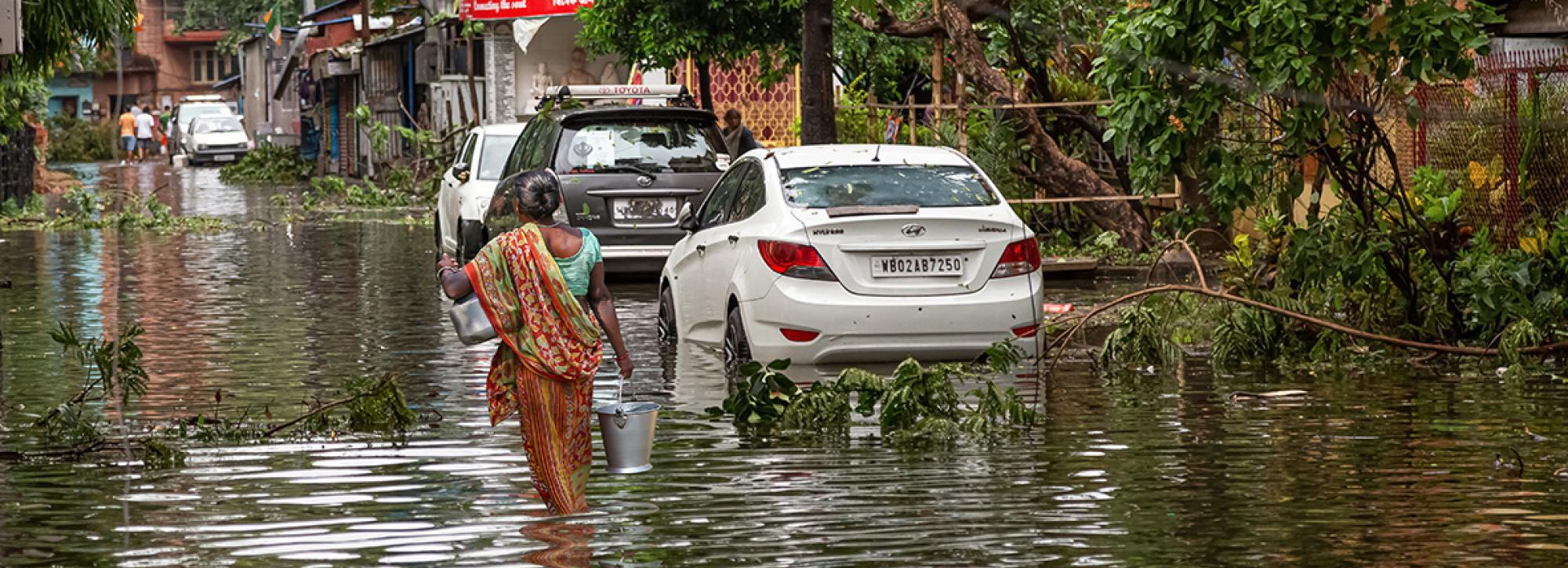
Flood-impact forecasting: the new frontier for EO
Accurately predicting the impact of floodwater is the new frontier of forecasting says Emma Brown, and it has Earth Observation data at its core.
Over four days in July 2021, a slow moving storm system moved through Germany and northern Belgium. The storm was predicted well in advance. What nobody anticipated was the scale of the destruction left in its wake. Rivers were overwhelmed. At least 165 people died. It was the worst natural disaster Germany had seen since the 1960s. The same month saw flash floods drop nearly 76mm of rain in 90 minutes in London, whilst hurricane Ida’s tail-end caused historic flooding in New York City. In November, residents of British Columbia, having experienced unprecedented heat and wildfires in the summer, saw highways swept away as a month of rain fell over a matter of days.
Flooding is getting both more frequent and more severe in many parts of the globe, and predicting its impact on the natural and built environment is a new and promising field of research for HR Wallingford. It combines the use of EO data with our expertise in hydrometeorology, statistical modelling and delivering clear, user-friendly IT systems.
A two stage process
“Good flood forecasting depends on two things: the quality of the input data, and how you then go about communicating the results,” says Emma Brown, our Flood Forecasting Team Lead. “Our bugbear as engineers is always ‘not enough data’, and EO is able to significantly improve the quality of the input to our forecasting models. We’ve also done a lot of research here on how best to disseminate the flood forecasts. Traditionally, flood forecasts tell us that there will be a certain depth of water in a particular river catchment at a particular time, but that doesn’t necessarily mean anything to people on the ground. Impact-based forecasting moves this approach to a different level. It’s a subtle, but really important difference in approach, which focusses on warning people what they need to do. Being flooded is a stressful situation, so people need knowledge and guidance, quickly.”
Paving the way: the SIVA project
One country that has become all too familiar with devastating floods is India, hit by two super-cyclones, Amphan and Nisarga in 2020. HR Wallingford is now developing a method to forecast impacts from future flooding as part of the Met Office Weather and Climate Science for Service Partnership. The SIVA project is focussing initially on study areas in Kerala, in the south of the country, which experienced devastating floods during the monsoons of 2018 and 2019.
“There’s a gap between what traditional forecasts can tell us (‘there’s a lot of rain on the way’) and the reality on the ground – which could be dealing with blocked roads, injured people, ruined crops,” says technical director Dr Quillon Harpham. “What we’re trying to do with the SIVA project is to plug that gap. If you can tell emergency services that a main route into an area will be impassable, then that’s really useful information.”
A cutting edge technology, new challenges
The challenge for the team working on this new area of research is how to verify the method. “There is a huge effort going on to try to obtain appropriate levels of data to validate the results,”, says Quillon. “Social media can be one source of information about flood events, or official figures on casualties, or Government reports on damage. We did a study around 10 years ago in Genoa, Italy where we used UK based depth/damage curves on the buildings – our estimates were very close to what the local authorities reported. So we’re definitely getting there.”
The key to the success of flood impact forecasting will be continued funding. SIVA is funded for two years, and the team are optimistic that they will secure a third year. The hope is that the research in India will lead to life-saving systems which can be rolled out all over the world.
Against a backdrop of climate change, rapid urbanisation and continued population growth, the need to accurately forecast the impact of flooding is likely to become more and more important. Countries like Malaysia, where according to the Department of Irrigation and Drainage almost 5 million people are at risk from flooding, stand to benefit hugely from the technology. HR Wallingford has been working with Malaysia’s Department of Irrigation and Drainage to build the first phase of a new National Flood Forecasting and Warning System, a fully-automated flood forecasting system which alerts the authorities 48 hours prior to a flood. Being able to add value to such vital forecasting systems, by forecasting impacts, will really take them to the next level, according to Emma, who has worked in Malaysia and seen at first-hand how floods, and the threat of floods, impacts the country.
“We can never completely eliminate the risks of flood disasters, but we believe continued, incremental improvements will gradually make a significant difference,” says Quillon. Sourcing, interpreting and combining EO and other data, and developing systems to tell the right people at the right time, has the power to make the difference between life and death.
Want to know more?
